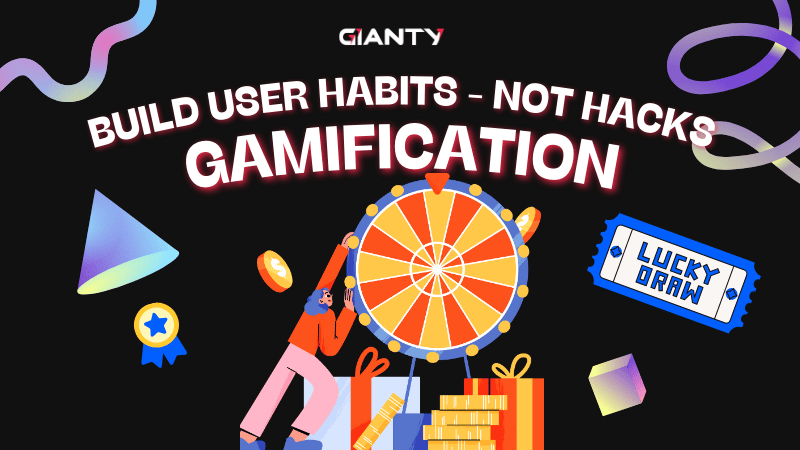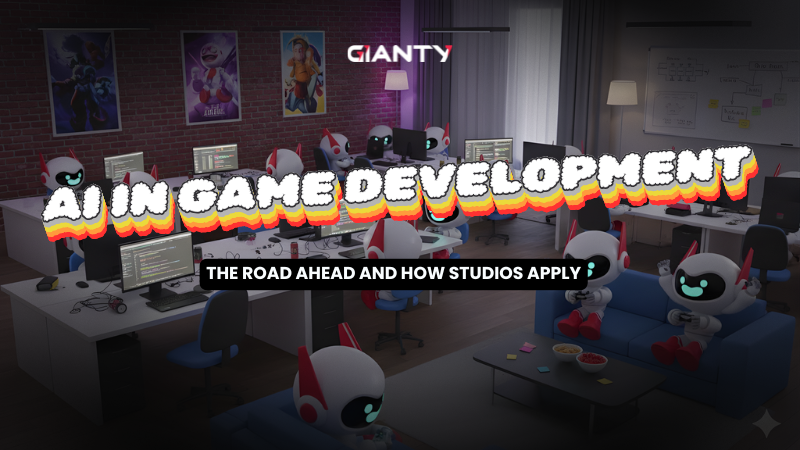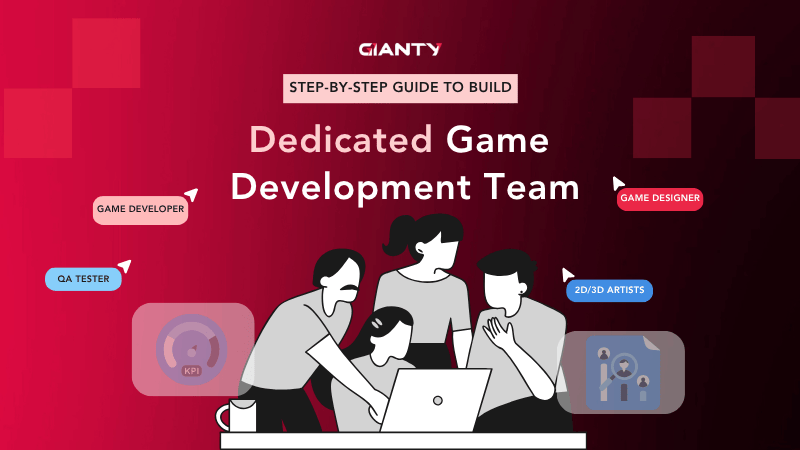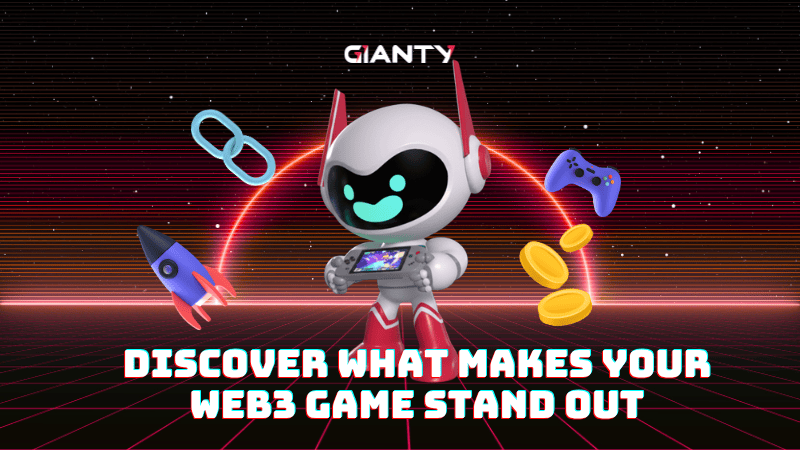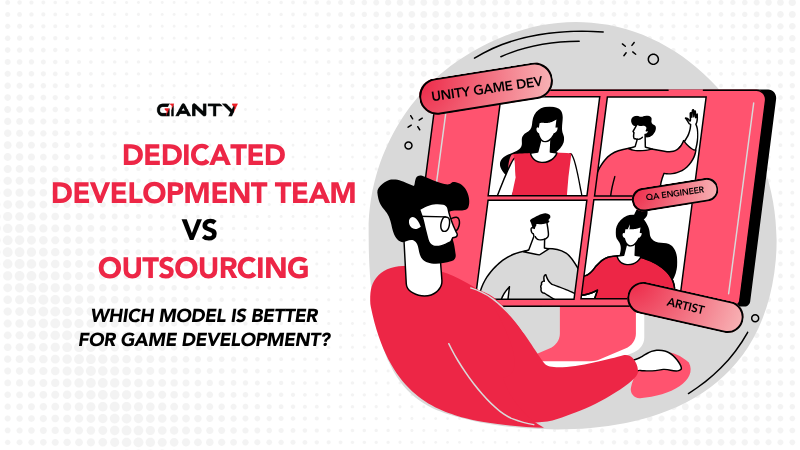Storytelling in game development is where every great adventure begins. It isn’t always written in words, sometimes it’s a world waiting to be explored, a moment of choice that changes everything, or a feeling that lingers long after the screen fades.
Storytelling games have grown far beyond cutscenes and cinematic dialogue. It’s now the emotional architecture that shapes how players experience every world, mechanic, and moment of decision. The best storytelling games don’t just tell stories, but they let you live them.
At GIANTY, we see storytelling as both art and system – the place where logic meets emotion. And in a time when technology like AI and analytics is reshaping creativity, understanding how storytelling in game development works has never been more important.
What is Storytelling in Game Development?
In game development, storytelling means weaving a narrative that pulls players deep into a living, breathing world. It’s the secret ingredient that ties together game art design and gameplay, turning interaction into emotion and play into experience.
A strong story gives direction to the visuals, helping artists build worlds that reflect the heart of the game. When the story is strong, it keeps players invested long after the excitement of new mechanics fades. Characters start to feel like real companions or real threats. And every mission isn’t just “finishing a level,” it’s seeing how your version of the story unfolds.
A good story gives gameplay purpose and emotion. Different genres and design philosophies approach storytelling in their own ways, but most fall into two main structures: linear and non-linear.
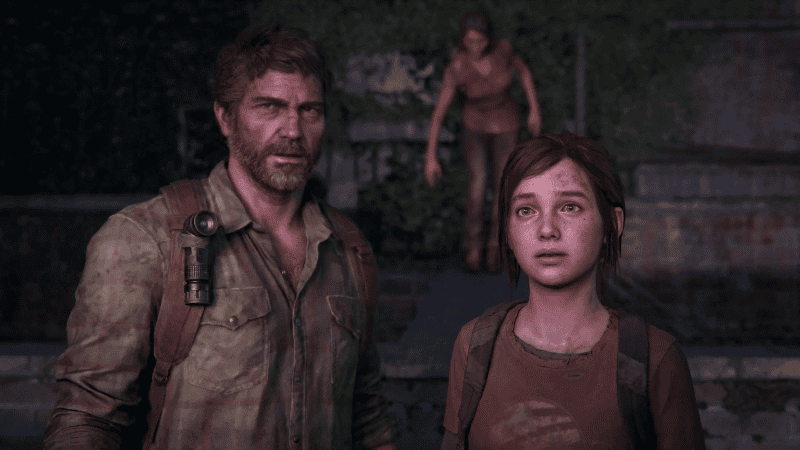
- Linear storytelling follows a fixed path where events unfold in a set order. Games like Uncharted or The Last of Us use this to deliver cinematic pacing and emotional impact.
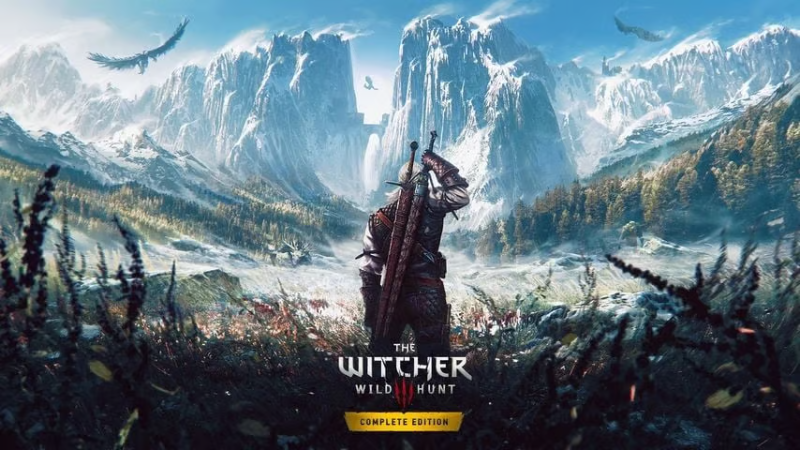
- Non-linear storytelling gives players more freedom to explore and shape outcomes. Open-world titles such as The Witcher 3, Skyrim or Grand Theft Auto V let each player experience the story in their own way.
Why Storytelling in Games Matters?
Storytelling has always been at the heart of great games, but in today’s world, it matters more than ever. As visuals reach cinematic realism and technology pushes new boundaries, the narrative gives everything meaning. When story and gameplay work together, every obstacle feels meaningful — not random.
Beside that, it drives how players think, act, and stay engaged. As noted by CIIT Philippines, narratives serve as powerful motivators, giving players purpose and direction as they progress. A compelling story fuels curiosity, encourages problem-solving, and turns every challenge into part of a greater journey.That’s what we call the interplay between decision-making, obstacles, and gameplay flow
Powering Player Engagement
A strong story gives players a reason to play beyond challenge or competition. It creates emotional motivation and the “why” behind every quest, puzzle, or decision.
Games like The Last of Us, Red Dead Redemption 2, and God of War show how a narrative can elevate gameplay from mechanical repetition to emotional engagement. When players relate to the characters and feel the stakes, every success and failure becomes personal.
That connection is powerful. It drives immersion, loyalty, and longevity, all of which bring the cornerstones of any lasting game experience.
Creating Buzz Beyond the Screen
Storytelling also fuels a game’s identity outside the screen. Narrative-driven marketing from cinematic trailers to teasers gives audiences something emotional to latch onto.
A good story spreads fast. Players share theories, post reactions, and debate endings. They form communities around characters, worlds, and shared experiences.
In an age where attention is fleeting, story-driven games stand out because they make people care. That’s the difference between playing a game and belonging to a world.
The Benefits of Storytelling Beyond Entertainment
Good storytelling doesn’t just entertain – it transforms. It pulls players into the world, lets them experience life from another perspective, and stays with them long after the credits roll. But its impact goes beyond emotion:
- It builds empathy. By stepping into another character’s story, players experience perspectives they might never encounter in real life.
- It develops critical thinking. Branching storylines, moral choices, and problem-solving within narrative contexts strengthen reasoning and adaptability.
- It communicates values. Games can explore complex themes such as justice, courage, loss, and identity in a way that feels personal and lasting.
- It builds community. Storytelling unites players. They discuss theories, share fan art, and form friendships through shared emotion.
For young players, interactive storytelling can be an effective form of learning, but it should be done in moderation. Ultimately, storytelling in game development gives players something more meaningful than entertainment – connection.
The Pillars of the Interactive Storytelling Game
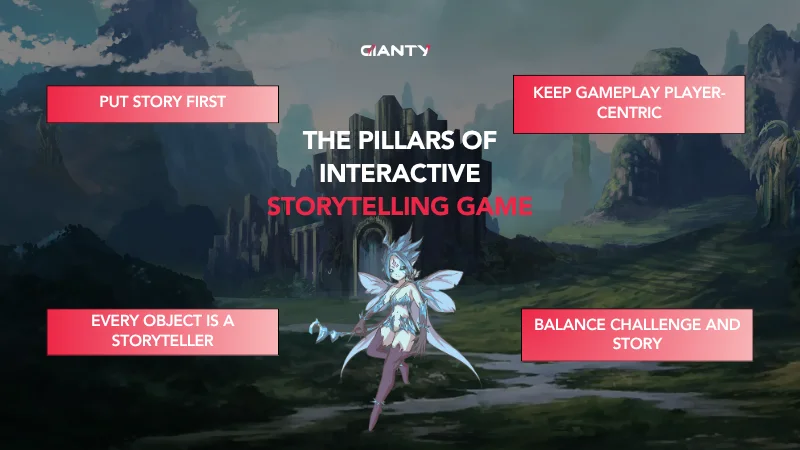
Put Story First
Start with the story, not the system. Build every mechanic, every environment, and every visual around the narrative you want players to feel. Give characters believable goals and flaws so they breathe on their own and pull players into their world.
Keep Gameplay Player-Centric
Let players stay in control. Limit interruptions or long cut-scenes and allow the story to unfold through the player’s actions.Choice and consequence are what make storytelling games memorable.
Let the World Do the Talking
Sometimes the best stories aren’t told in words. A broken sword, a dusty room, or a forgotten melody can say more than any line of dialogue. Good design trusts players to notice, interpret, and imagine. Every object, sound, or bit of scenery is a storyteller waiting to be discovered if you give it space to speak.
Balance Challenge and Story
Gameplay and narrative should move together, not fight for attention. When challenges mirror the tension or emotion of the moment, gameplay and story move as one. The result is a rhythm that keeps players engaged and emotionally invested.
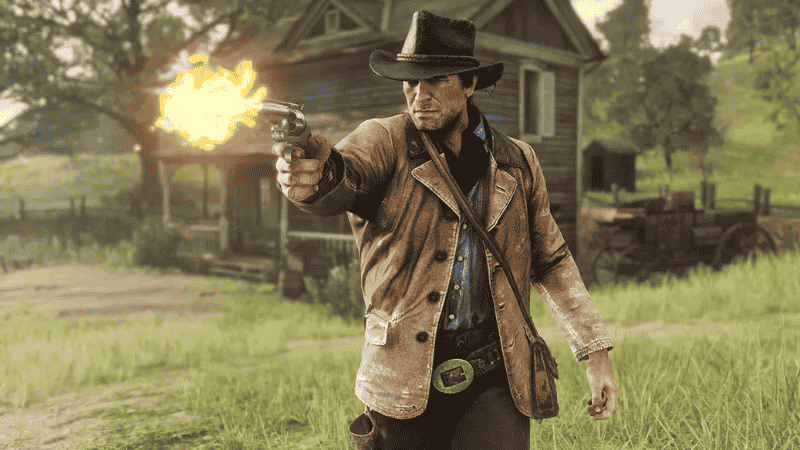
One of the best examples of a storytelling game that truly embodies these 4 pillars is Red Dead Redemption 2. The story leads every decision, grounding gameplay in emotional weight and moral complexity. Players remain fully in control, shaping Arthur Morgan’s path through choices that feel deeply personal. The world itself tells its story – every conversation, landscape, and small gesture reflects life, loss, and change. Challenges blend seamlessly with narrative pacing, never breaking immersion.
The Evolution of Storytelling in Games
Storytelling in games has come a long way from pixelated text boxes to cinematic universes that rival film. But as the medium has matured, a new challenge has emerged: familiarity.
Players and critics alike have begun noticing that many modern storytelling games, especially big-budget titles, often follow similar structures and emotional beats. As IGN pointed out in “I’m Getting Bored of Every PlayStation Game Telling the Same Story,” even great narratives can start to feel predictable when they share the same formula.
Why does this happen?
The Hero’s Journey Overload
Hero’s journey remains the most popular storytelling blueprint in games and for good reason. It’s universal and proven. But it’s also overused.
When every hero must lose, grow, and save the world, we risk missing out on the quieter, more personal stories that make games truly special. Developers today are beginning to push beyond that structure, exploring stories about identity, relationships, and ordinary human moments.
Market Pressure and Creative Risk
Narrative-driven games are expensive to make. They require years of writing, animation, and voice production, which often pushes studios toward safer, familiar emotional patterns.
But innovation happens at the edges. Indie storytellers and experimental studios are leading a creative shift, showing that small, character-driven stories can have global emotional impact.
The Cinematic Trap
Chasing cinematic quality has made modern games stunning to watch, but sometimes less interactive. When storytelling leans too much on film-style presentation, players can become passive observers instead of participants.
Games are at their best when they let players shape the narrative through play. The future of storytelling will depend on how well developers can merge cinematic polish with player agency.
The Future of Storytelling in Game Development
The next chapter of storytelling in games will be written not just by writers but by technology. AI, data-driven systems, and procedural generation are opening doors to adaptive storytelling: narratives that respond to each player’s actions in real time.
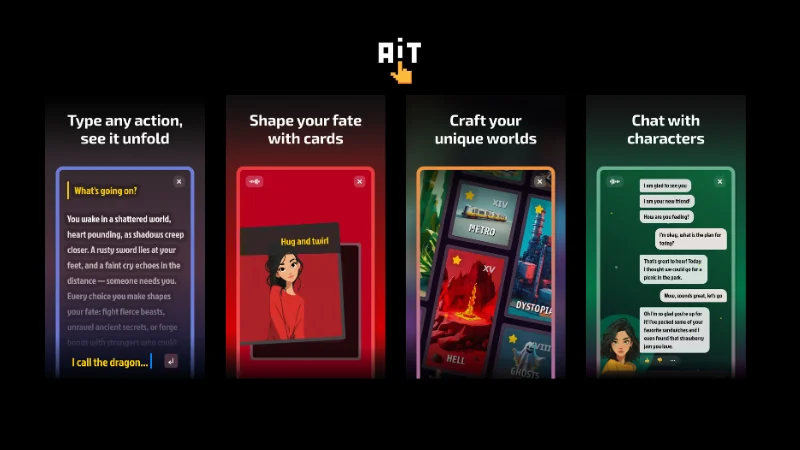
Imagine an AI storytelling game that changes dialogue based on how you play, or an interactive storytelling game that remembers your decisions across sessions. Imagine collaborative storytelling games where multiple players shape one shared narrative, or even emotion-aware NPCs that react to your tone and behavior.
These innovations won’t replace creative storytelling, but they’ll enhance it. Writers and designers will gain tools to craft more personalized, emotionally intelligent worlds than ever before.
The question will no longer be, “What story are we telling?”. It will be, “What story will you create?”
Closing Thoughts: The Story Is Just Beginning
Storytelling in games isn’t a trend. In summary, storytelling in games is never just about cutscenes or dialogue. It’s the foundation of how players connect, remember, and return. Because players don’t just watch the story but they shape it. That’s what makes the connection stronger, a bond with characters and worlds that lingers long after the game ends.
Great storytelling is what turns a good game into a meaningful one. It gives gameplay heart, art direction purpose, and worlds soul. Some of our most defining works reflect this belief — GOKEN, an original action RPG that reimagines classic Japanese storytelling through modern combat, and Ayakashi, a tale that invites players into a world of magic, adventure, and myth. Each story is built with one goal: to create emotion that lingers, connection that lasts, and worlds players never forget.
Your next story doesn’t have to start from scratch.
It needs the right team to bring it to life – a dedicated team at GIANTY combining game designers, artists, and developers who know how to turn imagination into playable experiences that connect with players everywhere. Reach out to us today for your next IP!



